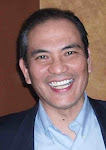 IMMORTALITY IN THE NEAR FUTURE?
IMMORTALITY IN THE NEAR FUTURE?If not for his record, I wouldn’t give this a second thought. Immortality! Most people would like that I think.
Scientist Ray Kurzweil claims humans could become immortal in as little as 20 years’ time through nanotechnology and an increased understanding of how the body works.
The 61-year-old American, who has predicted new technologies arriving before, says our understanding of genes and computer technology is accelerating at an incredible rate. He says theoretically, at the rate our understanding is increasing, nanotechnologies capable of replacing many of our vital organs could be available in 20 years time.
Mr Kurzweil adds that although his claims may seem far-fetched, artificial pancreases and neural implants are already available.
Kurzweil’s version of immortality may not fit most people’s vision though.
Ultimately, nanobots will replace blood cells and do their work thousands of times more effectively.I’ve followed Mr. Kurzweil for the past two decades. According to Wikipedia, among his accomplishments are:
Within 25 years we will be able to do an Olympic sprint for 15 minutes without taking a breath, or go scuba-diving for four hours without oxygen. Heart-attack victims—who haven’t taken advantage of widely available bionic hearts—will calmly drive to the doctors for a minor operation as their blood bots keep them alive.
Nanotechnology will extend our mental capacities to such an extent we will be able to write books within minutes. If we want to go into virtual-reality mode, nanobots will shut down brain signals and take us wherever we want to go. Virtual sex will become commonplace. (It better be as good as the real thing!) And in our daily lives, hologram-like figures will pop in our brain to explain what is happening.
So we can look forward to a world where humans become cyborgs, with artificial limbs and organs.
- a statistical processing program that he wrote at age 15 that was later used by IBM.
- a pattern-analysis program that analyzed classical music and synthesized its own. Because of it, he appeared on national television, was recognized by the prestigious Westinghouse Talent Search (now known as the Intel Talent Search), and was personally congratulated by then-President Lyndon Johnson.
- the first successful OCR software. In turn, this required the invention of two other technologies...
In my opinion, he’s a first-rate genius. He has that rare ability to visualize possibilities and actually make them happen. If it requires tools and techniques that don’t exist, he creates them.
His genius is similar to that of Sir Isaac Newton whom I think deserves as much, if not more, praise than Albert Einstein. (By nature, we tend to be more cognizant or aware of events that happen more recently.)
Mr. Einstein, who is undoubtedly a first-rate genius, made his mark in the first half of the previous century. At least one of his discoveries assumed practical importance during the Second World War. This was his famous equation that identified the relationship between matter and energy.
This equation served as an important theoretical foundation for the development of the atomic bomb.
Sir Isaac Newton, on the other hand, lived in the 17th and 18th centuries. He was, according to Wikipedia, a physicist, mathematician, astronomer, philosopher, alchemist, and theologian. Two of his accomplishments impress me personally: his invention of a new type of telescope and his creation of a new form of math, calculus.
Consider that these accomplishments were just by-products of his pursuit of other goals.
The new telescope design came about due to his research into color. He was trying to prove that the color of light does not change whether it is transmitted or received (i.e., whether it originates from a flashlight or is the green that we see in leaves). His theory, for example, explains why the sky is blue. (It is not blue because it is blue. Rather it is blue because air molecules scatter blue light more than any other color. In space, where there is no air, the sky is black. Black is the color by default, i.e., the absence of color leaves only black. For more on color, click here.)
He created calculus, the new math, to help him understand the movement of bodies. The reflecting telescope (also known as the Newtonian telescope) is the most popular telescope design. The famous Hubble telescope is a reflecting telescope. The world’s largest and most modern telescopes are all Newtonians. Calculus, on the other hand, is the bane of many students. I hated it myself. On the other hand, all physical sciences use calculus to some degree. What is calculus? A good and simple definition is provided by answer.com:
Calculus is the study of the “rates of change.” There are two main branches of calculus: Differential Calculus and Integral Calculus. Differential calculus determines the rate of change of a quantity, integral calculus finds the quantity when the rate of change is known.For more on calculus, click here.
At any rate, this is quite a prediction even coming from Mr. Kurzweil. For the moment, I just hope to be around in 2030 to learn if this or something resembling it comes true.
Links to several Kurzweil sites:
• Kurzweil Technologies
• Biography
The source article is here.


1 comment:
Thanks, Cooper! Learned a lot after reading your post about Kurzweil etc.
Post a Comment